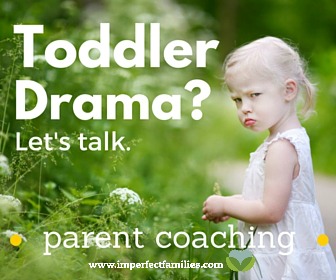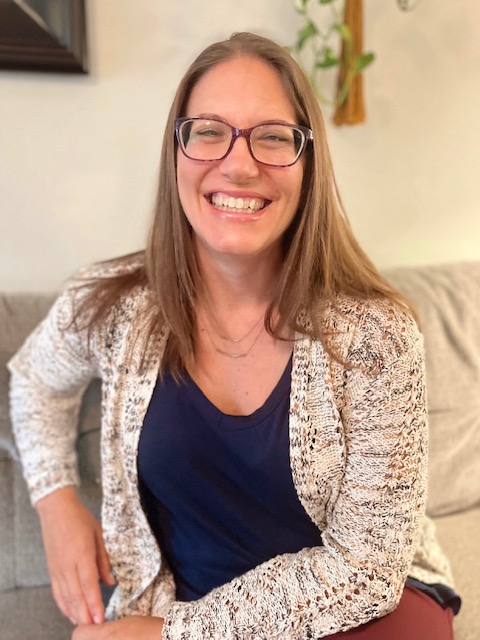Use the latest brain research to help your child stay calm and manage their big feelings without a huge meltdown. Learn how to stop tantrums – even if they’ve already started – with this 2-step approach!

This post contains affiliate links. If you purchase through these links I will receive a small commission at no additional cost to you.
We’re leaving the zoo. The car is parked at the far end of the lot. It’s going to be a trek and my 3 kids are already tired.
My middle child is complaining about the walk, “It’s too far!! I can’t make it! I can’t walk that far!!”
I try making the walk fun. “Let’s skip!”
She responds, “I DON’T WANT TO WALK!”
I try encouraging. “Won’t the air conditioning feel good once we get to the car?”
Louder, she yells, “I DON’T WANT TO WALK!!!!”
Feeling discouraged and starting to get frustrated, I suddenly remember a brain-based strategy I learned in a training recently.
We stopped walking. I knelt down in front of her, making sure I was below her eye-level. I held her hands and began to respond to her screaming using empathy.
“You really don’t want to walk to the car.”
She yells back, “I REALLY, REALLY DON’T WANT TO WALK TO THE CAR!!”
I respond, “You really, really don’t want to walk to the car.”
And then…the most miraculous thing begins to occur. She starts to soften. Her face turns from anger to sadness. Her shoulders start to relax.
Suddenly, she collapses into me – starting to cry. I hug her for a minute.
When she’s calm, I ask, “How should we get to the car?”
“Walk.”
And that’s what we did.
How to stop tantrums
Step 1: Get Low
Getting below your child’s line of sight can make the difference between a huge blowup and a productive conversation. It can take a child from the brink of destroying your living room to sitting calmly in your lap.
It’s almost too simple.
When we speak to our children from an authoritarian posture, standing above looking down, our child’s brain feels threatened. It signals the “fight, flight, or freeze response” in the brain.
Rather than thinking logically about the situation, your child’s brain has decided that there is a serious problem that needs to be managed, and it has switched into survival mode. Some children may lash out with angry words or actions. Some children may refuse to move or respond, appearing to have “checked out.” While other children may literally run away or hide.
Positioning yourself under your child’s line of sight keeps the brain from feeling triggered…which means they stay out of that “fight, flight, or freeze” response.
A calmer brain = fewer tantrums
But don’t panic if the tantrum has already started! Take a deep breath and “get low.”
This strategy comes from Dan Siegel and Tina Payne Bryson, co-authors of The Whole Brain-Child, No Drama Discipline, and The Yes Brain
Step 2: Use Empathy
Once you’re below your child’s line of site, you have to decide what to say. Saying the “wrong” thing can trigger your child’s brain. Things like yelling, distracting, using logic, and giving ultimatums usually make things worse rather than better.
Responding to your child with empathy can help, but it is not always easy.
Empathy means putting yourself in your child’s position – even if you don’t agree, think they’re exaggerating, or overreacting!
Start by simply responding to your child with their own words. Paraphrase what you hear them saying. (If you get it wrong, your child may correct you. Then, you can paraphrase back their clarification.)
Or, try putting their experience into words, by making an observation about what’s happening and adding a feeling to it, “You’re upset that we have to walk so far!”
If you get stuck or don’t know what to say. Be silent for a minute. Take a deep breath.
Deep breaths = your brain can calm down = you can be more empathetic = fewer tantrums
Learn more about what to say or how to say it here.
What if this doesn’t help?
If you’re thinking, “This seems too simple. There’s no way this will work with my child,” I encourage you to give it a try a few times before you write it off completely.
For many kids (like my middle daughter), just having their parent’s calm presence is enough to get their brain out of the “fight, flight or freeze” zone and back to normal.
Of course, like everything in parenting, there is no one-size fit’s all approach. If your child continues to tantrum or is upset, check out this post to explore more options: What to do when your child won’t calm down.
Need More Support?

Changing your parenting is not always easy. Sometimes, it helps to have an outside perspective and someone to walk with you as you change things that are not working well with your parenting. Parent Coaching can provide individualized education and support to help you parent with confidence. Learn more and schedule an appointment today!



Comments have been turned off to retain the privacy of all families. If you have a question or comment on the topic, you're always welcome to contact me.